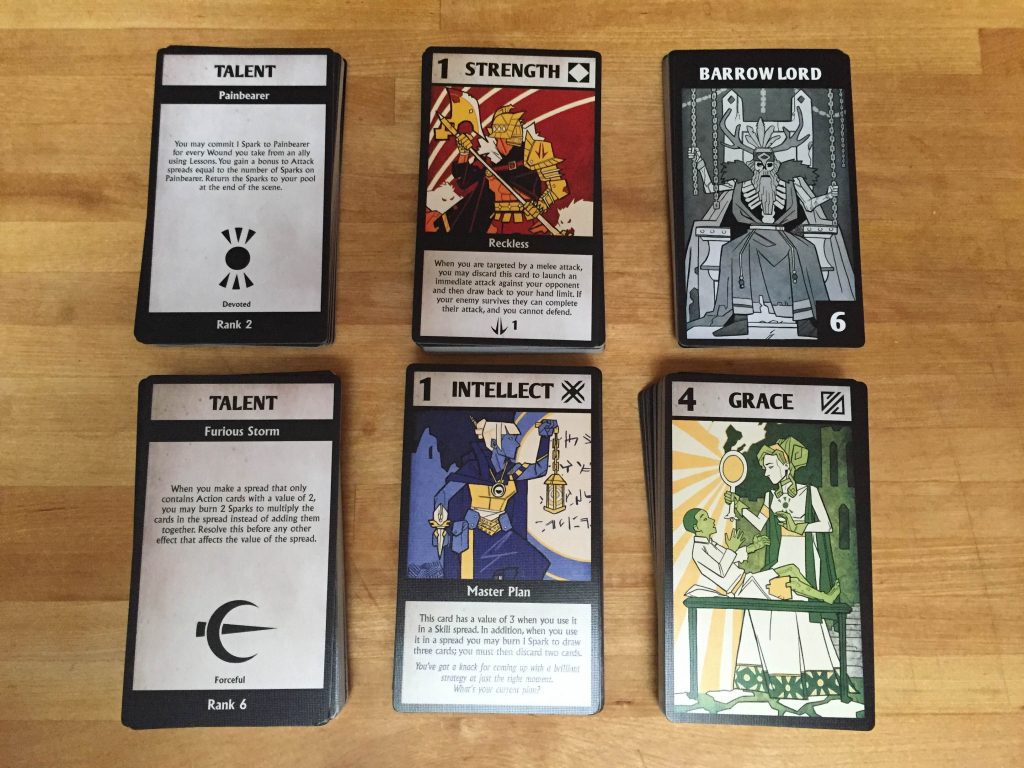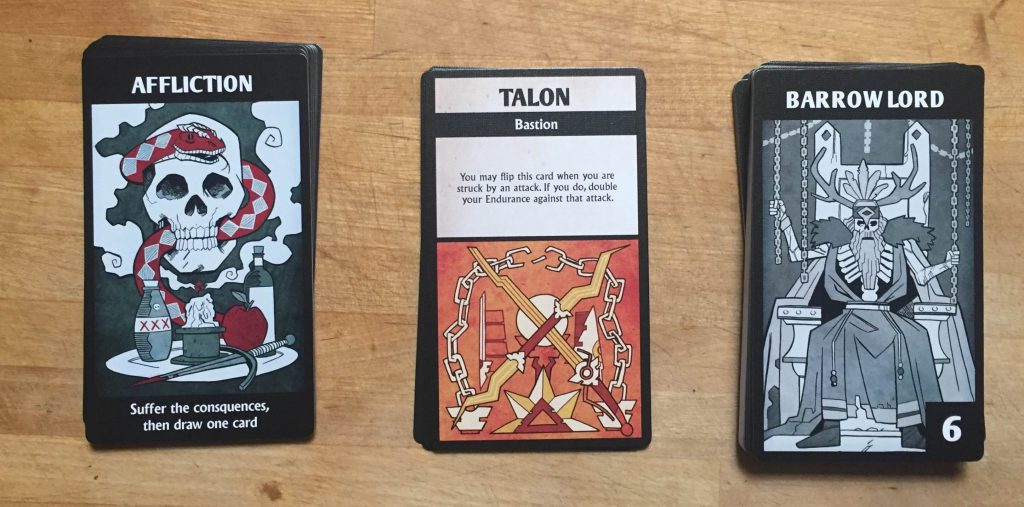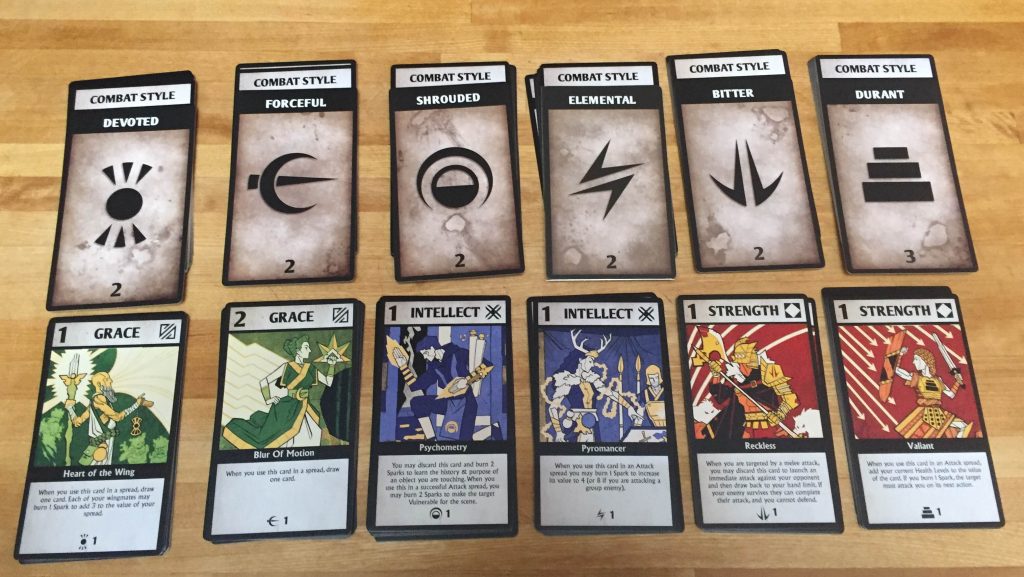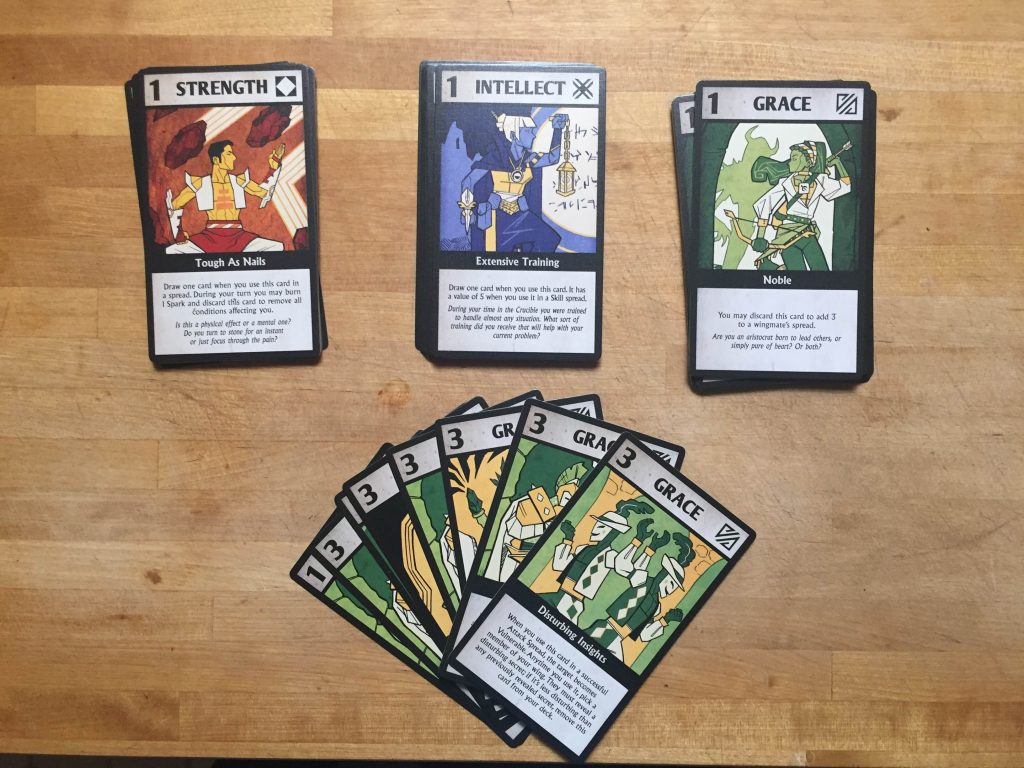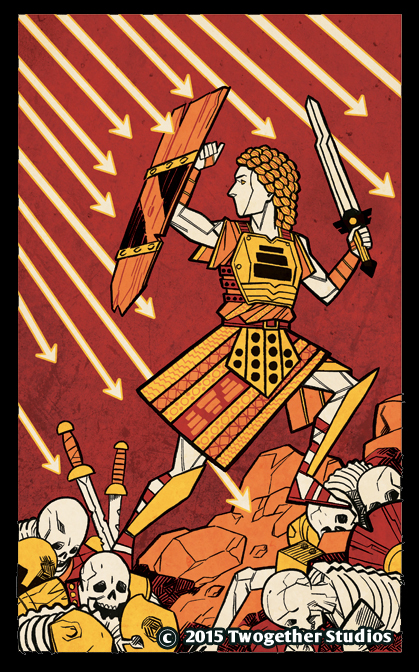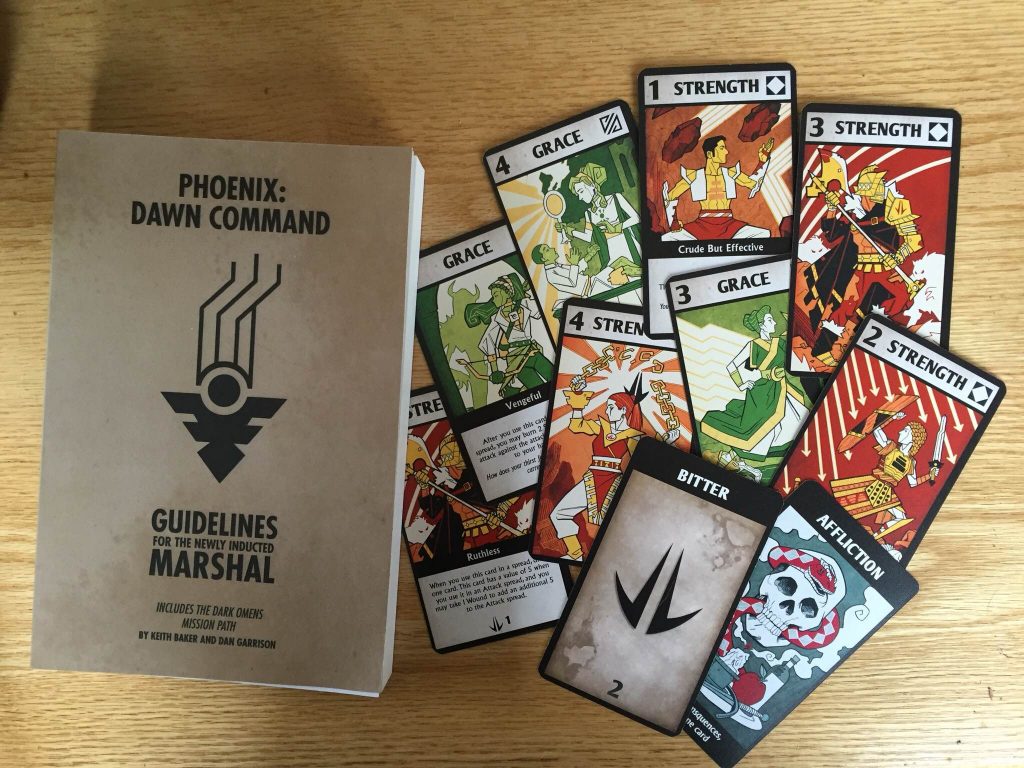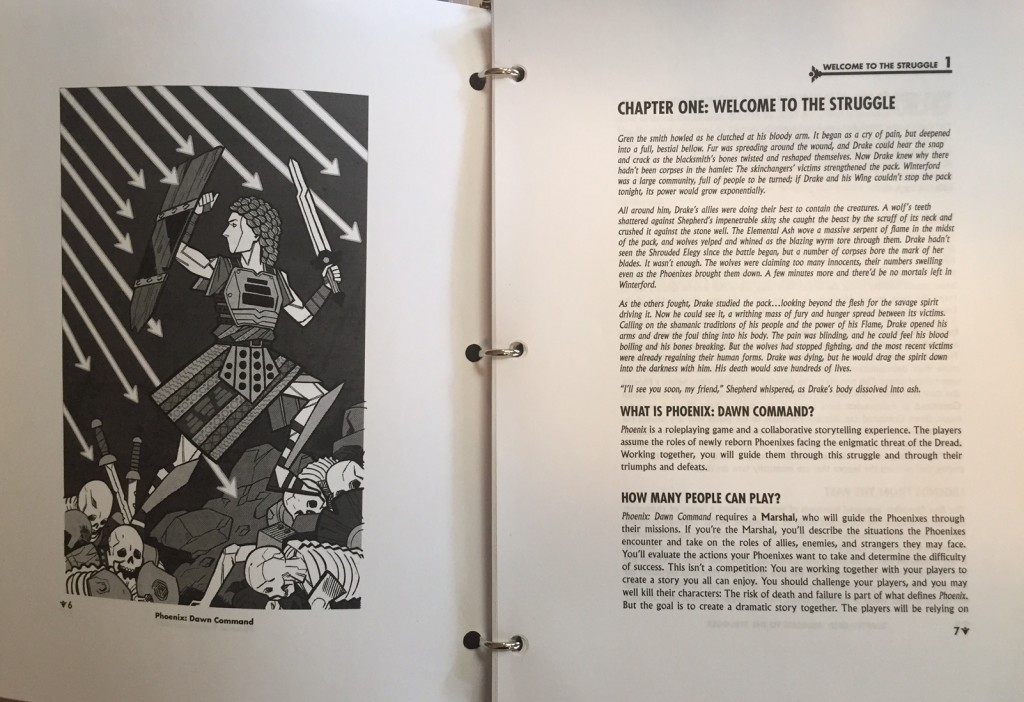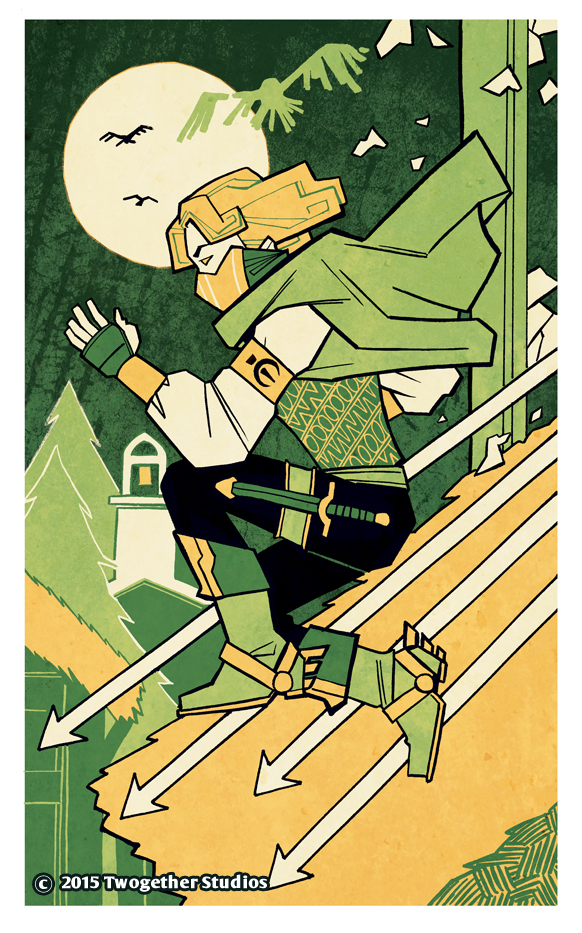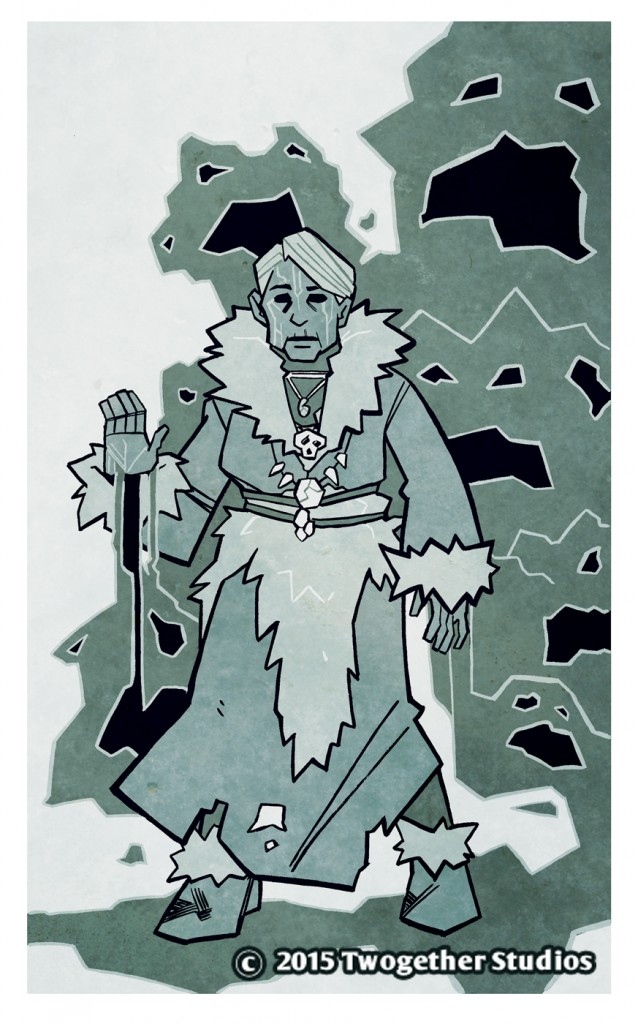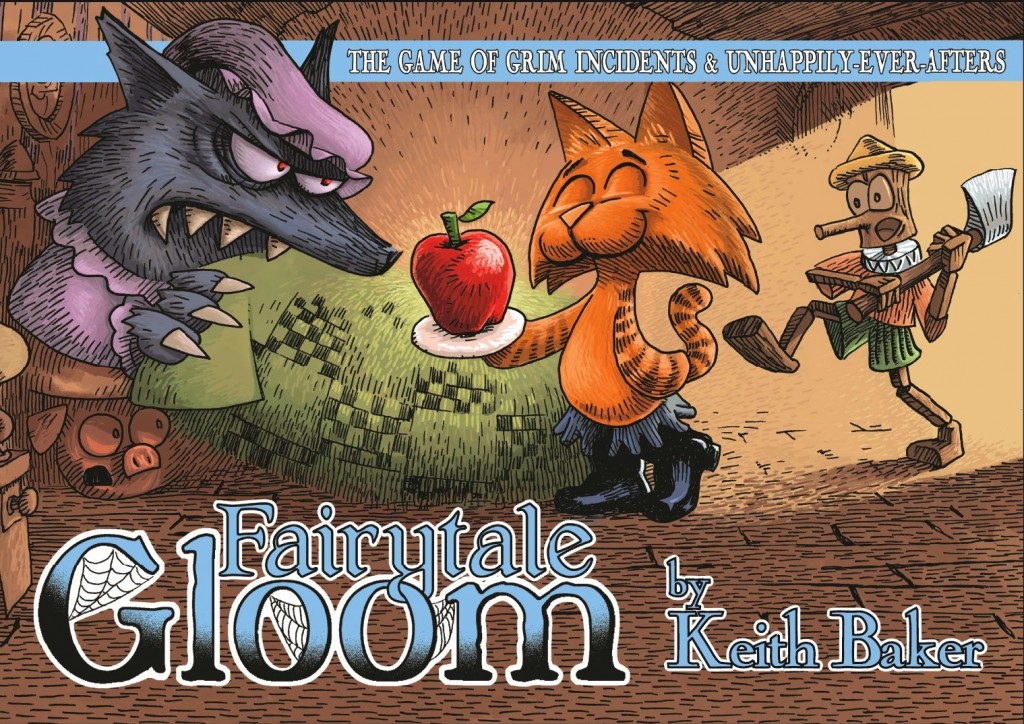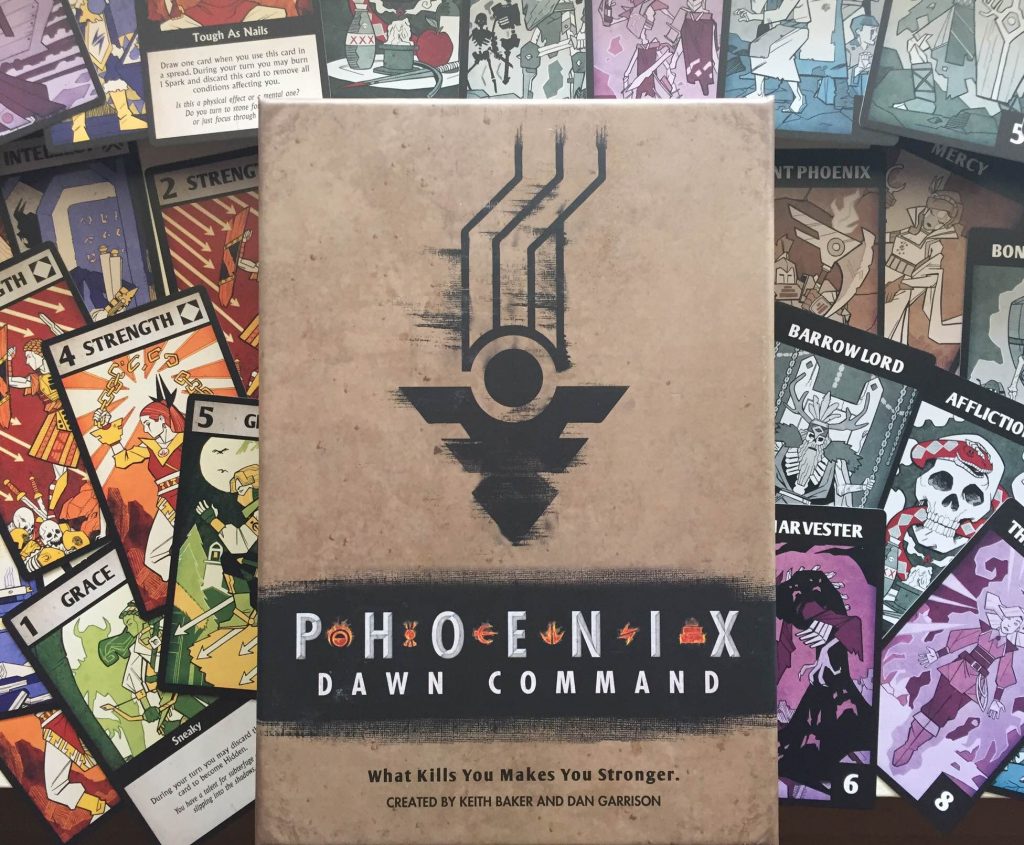
Dan Garrison and I have been working on Phoenix: Dawn Command for the last three years. We’ll be releasing the game in August, and it seems like a good time to start talking about it! If you missed the prior post, here’s a link to the events we’ll be running at Gen Con. Meanwhile, if you have questions about the system or the setting, ask away!
You once mentioned how magic in a setting should truly affect the world. How does it affect day to day life of the world of Phoenix?
In Eberron – and D&D in general – magic behaves in a scientific manner. It is reliable: as long as you don’t get punched in the face while you’re casting it, your fireball will always work. One wizard can teach a spell to another. Eberron was thus based on the idea that if magic behaved like science, then it should be incorporated into the world just as science has been.
Phoenix works from a completely different core assumption. Magic isn’t reliable: it is mysterious, powerful, and very dangerous. Humanity has dabbled with it for a long time, but never truly mastered it. Each region has its own magical traditions… the Grimwald shamans invoke natural spirits, while Skavi warlocks bargain with the Fallen Folk and the Talu families draw on the power of their House Gods. Or at least, they used to. Again, while powerful, all of these practices were dangerous and unpredictable. When the Phoenixes established the Empire, they drove the Fallen Folk into the Dusk and banished the House Gods. The practicing of magic was forbidden, and much arcane knowledge was lost. This continued throughout the Phoenix Imperium. Following the Civil War, the Phoenixes themselves disappeared. In the following centuries, some people have begun to dabble with these dangerous arts once more… but it remains an obscure and hidden practice. And now we have the Dread. Are the Fallen Folk returning? Could the Talu reclaim their House Gods? Could the Dread itself have been caused by such foolish dabbling with forces best left alone? Of course, all of this is deals with the personal use of magic. There are also magical artifacts in the world. The Bulwark cities of Skavia are built around powerful such relics… and some of the cities ARE such relics, such as the remnants of a massive bridge now known as Hafsbridge. In a sense, you could look at this as similar to manifest zones in Eberron: People have found an ambient magical effect and settled their to take advantage of its power.
So Phoenix is a setting where magic exists and IS part of the world… but where humans have very little understanding of it. In Phoenix, investigation is part of the story. Defeating a threat is obviously important – but understanding what it is and why it has appeared is even more important, if you hope to turn the tide.
There is one approved form of magic, and that is Ash Sorcery – an art that deals with the Imperial Flame and uses the final ashes of Phoenixes for major workings. But that’s explained in more detail in the book. Intellect-driven Phoenixes can choose to dabble in one of these old paths of magic, and Skavi or Talu Phoenixes could have ties to their ancestral traditions. But again… these are things that have been buried as opposed to being embraced. Even Phoenixes are now considered legends; as one of the new generation of Phoenixes, you are bringing magic back to the Empire.

I had the impression that heroes are more “guys with superpowers” than traditional fantasy heroes, and that these powers don’t look like magic. Did you considered this aspect? Do you think this make the world of Phoenix more similar to the fantasy of Japanese anime than traditional european/american fantasy?
Well, let’s take a look at three Phoenixes. Shepherd (left) is a Durant Phoenix, a tough warrior who faces her enemies with sword and shield. She draws on her power to survive injuries that would bring down others, and to give her the strength to protect her allies and bring down her enemies. Elegy (middle) is a Shrouded Phoenix, whose magic shrouds her in shadow and allows her to learn the secrets of her foes. Drake (right) is a Devoted Phoenix. The light of his flame strengthens his allies and heals their wounds. A shaman in his first life, he knows the ways of the spirits and can exorcise the restless dead.
Phoenixes are, in a sense, superheroes. They are mortals reborn and infused with mystical power. No one can just decide to become a Phoenix; you have to be chosen and you must endure the tests of the Crucible. So that is very different from the typical d20 character. With that said, Shepherd is a warrior who goes toe to toe with her enemies, Elegy makes devastating attacks from the shadows, and Drake is a healer who strengthens his allies; in terms of story roles, not SO different from a fighter, a rogue, and a cleric.
With that said, YOU decide exactly how your Phoenix’s powers manifest. This also ties to the Traits you select in character creation. Drake selected the Trait Shaman; as a result he decided that his magic involves calling on natural spirits. One Elemental could say that his Talon is a spellbook, and that he conjures his flames by reading from its pages; while another could take an Engineering specialty and present his Elemental as an artificer, saying his Talon is a makeshift flamethrower and that his attacks use this and grenades of his own design. One Durant could explain her resistance to damage by saying that she is just exceptionally good at blocking attacks with her shield, while another says that he’s actually just a massive suit of armor.
So the ROLES of the characters are familiar: Warrior, healer, rogue. But how their abilities manifest is up to you. A wing of Phoenixes could look exactly like a typical D&D party… or they could be considerably more exotic.
Have you ever considered to use the d20 system for Phoenix? Do you think you could project an adaptation for that system?
Making a new system isn’t something to do lightly. There’s a lot of good systems out there; why make a new one? When Dan and I first started working on Phoenix: Dawn Command, we considered the possibility of driving it with the d20 engine. In some ways, it would be a relatively simple conversion. Start PCs at second level, and each time they die they gain three levels. The Phoenix Schools translate fairly easily to d20 classes: Bitter (barbarian), Durant (fighter or warlord), Devoted (cleric or druid), Shrouded (bard or thief), Elemental (sorcerer or warlock), Forceful (ranger or monk). In Phoenix you have a pool of energy – Sparks – that let you push beyond your limits; you could represent with an expanded version of the Action Point system.
But there are other elements of the system that don’t translate so easily. When an enemy attacks you, does it hit you and how much damage does it do? When you attack it, are you successful? How much damage do YOU do? When they cast a spell on you, do you resist it? In d20, these things are determined by random die rolls. In Phoenix, all of these things are in the hands of the player – literally, in their hand of cards. It’s not simply a question of what cards you have in your hand, but how you choose to play them. In Phoenix you may well decide to be struck by an attack you COULD avoid… because you’d rather save your best cards to do something amazing on your next turn. You can push beyond your limits with Sparks, but you die when you run out of Sparks. Is this the right time to use that power?
Essentially, when you fail or die in D&D it’s typically because random events didn’t go your way. You fail a saving throw. Your enemy rolls a critical hit. In Phoenix, as often as not, when you die it’s because you CHOOSE to die… because with your sacrifice you were able to do something important. You use the last ounce of your power to hold the door against the horde of zombies or strike the mortal blow against the ultimate enemy. You may die, but quite often it feels like a triumph, not just a bad roll of the dice.
Another way to look at this: Your paladin is facing the Lord of Evil. He makes a grand speech swearing to avenge the demon’s innocent victims. He uses his mightiest attack. And then… he rolls a one, the attack fails, and your turn is a dud. There are times when this can be hilarious and fun, but from a dramatic perspective that’s not how you wanted the scene to go. In Phoenix, you can look at your hand and your Sparks and know before you make that speech whether you can pull this attack off. It’s possible you have a crappy hand and you simply CAN’T perform a successful attack this turn. But if that’s the case, you know it and you can try to figure out what you CAN do with the cards that you have. Hold that big speech and attack for your next turn; this time, save the victim on the altar or grab that scroll in the corner.
So you could make a VERSION of Phoenix using d20. But unless you substantially change the system, it won’t feel the same as actually playing Phoenix.
I’m a little bit skeptical about the whole “accessible to non-roleplayers” thing. Have you actually tested that claim with some random friends or relatives that have never gamed before?
I understand your skepticism! We’ve been testing across the country over the last three years, and I’ve played with a lot of people who aren’t my friends or relatives… including quite a few who haven’t gamed before. One of my favorite sessions involved three generations of a family, in which the grandparent had never played before and the youngest member of the group had played games like Pokemon and Magic, but never an RPG. I wouldn’t recommend it to someone who’s not at least interested in trying an RPG, but as long as they are up for trying it, there’s a number of things that make it easy to learn. As a player, everything you need to know is in the cards that are in front of you and in your hand. There’s a minimal amount of terms to pick up – you’re not dealing with dozens of stats and game terms, and you don’t have to look up rules during play. The core mechanic is very straightforward: tell the GM what you want to do, and they’ll tell you what you cards you need to play. That same mechanic underlies attack, defense, and noncombat actions… so once you’ve got that down, you can do anything.
The GM needs to understand the rules. But it’s an easy game as a player. It’s NOT a good game for someone who likes complex simulation or lots of fiddly rules. With that said, there are strategic decisions and optimization choices that give more experienced gamers something to play with. Complexity also varies by School – Durant is one of the simplest Schools to play, while Devoted and Forceful are more complex.
At the end of the day, it’s an RPG, and there will be some people who will always be intimidated by that. But I have played with many non-gamers over the last few years, and as long as someone is interested in giving it a try, it really is easy to pick up.
Are there are plans for Supplements? Of what Kind?
Certainly. The Marshal’s Handbook only has room for a high level overview of the setting. I’d like to delve into the regions and cultures of the Empire; the manifestations of the Dread; conspiracies and other threats beyond the Dread itself; additional mission arcs; and of course, more Challenges for GMs and more Lessons, Traits, and Talons for players. In the long term, I’d be interested in exploring other periods in the history of the Daylit World. I’ve also been playing around with Phoenix fiction. Essentially, all the things I can’t currently do for Eberron. However, the scope and form of this support will of course depend on the success of the core game; at this point, we don’t know what the demand will be.
Do you think Phoenix will be translated in any language different from English?
This is entirely dependent on how successful it is and whether there’s a demand for it. Right now, it’s to early to know.
Did Dragonlance Saga had any influence on this work?
No – I’d never even heard of Fifth Age until over a year after we’d been working on Phoenix, and I’ve still never actually played it. From skimming the rules, I think there’s definitely some overlap – both use cards to remove the random factor of dice, and both encourage a more freeform approach to skills and magic. However, there are some fairly substantial differences. In Phoenix, each character has a unique deck that reflects the abilities and traits of their character; in FA people draw from a common deck and combine the cards with a separate character sheet. I believe that FA uses hand size as a reflection of health, while Phoenix uses tokens to track health. Phoenix has the resource of Sparks, which allow you to push beyond your limits… but you die if you run out of them. And, of course, in Phoenix death is how you grow stronger.
They’re both card-based fantasy RPGs, and there’s bound to be some overlap. But it’s coincidental rather than intentional.
Regarding the PDF download: I hoped we would get some NPCs write ups, specially for the Marshals… There are conflicting reports about the manner of a certain character’s death in the front and back portions of the book. I assume that’s intentional?
The PDF that has been sent to backers doesn’t include the 200-page mission arc that’s included in the physical book – we just wanted to give backers a chance to familiarize themselves with the rules. The mission arc gives a much deeper look into the world, and includes descriptions of many NPCs and locations. It also explains the discrepancy you’re asking about, which is indeed intentional; during the missions, the players have an opportunity to learn secrets that have been hidden from history.
The missions have some sort of timeline occurring besides the one the players will be doing? Do have a sense of all the success and failures of the Command in the world, and lessen the “we are the only group doing something around here” feeling?
The missions focus on the player characters. However, there is a bigger picture going on. The Bones are moving north. Cities may fall to the Chant. This is something that is conveyed in interludes, stories that are told between missions. Interludes generally don’t require gameplay; it’s an opportunity for players and GM to address other events in the world. As part of this, players are encouraged to create a rival wing – another group of Phoenixes that are out on missions at the same time as the players. Now, these Phoenixes don’t actually HAVE to be rivals; they simply serve to emphasize that there ARE other Phoenixes out in the world, and during interludes the GM may report on their actions. “While you were fighting the Chant in Ilona, the B-Wing was dealing with skinchangers in the Grimwald. Badger and Cutter were killed, but Mercy was able to banish the possessing spirits and save Talmouth.”
About number of players, the game is supposed to be played with 3-4 players, is possible to play the missions with just one or two?
It is definitely possible to play with fewer than three or more than five. However, it’s not ideal. Phoenix is designed with teamwork in mind, and many situations require sacrifice for victory. So a single player is going to lack all the skills required to handle most situations, and will be in a bind if faced with a situation requiring sacrifice. Conversely, in a 5-6 player game each player has less time in the spotlight and there’s less of a sense of limited resources. So 3-4 is definitely the magic number… but once the game is out we’ll post advice on running for other group sizes.
About NPCs, the rules are very much us against them, how can we handle friendly (and helpful) NPCs? Like very capable humans, wizards, other phoenix.
The focus of Phoenix is defending the innocent, and you’ll often end up in situations where there are mortals who need your help. With that said, even an exceptional human is extremely fragile next to a Phoenix; further, many mortals simply have no defenses against the threats that Phoenixes can resist (possession, the Chant, etc). Phoenix uses a mechanic called the Buddy System, whereby a Phoenix teams up with one or more mortals and is responsible for keeping them alive. Capable mortals will enhance the Phoenix they are teamed with.
None of the existing missions involve teaming the wing with NPC Phoenixes. Essentially, there just aren’t enough Phoenixes in the world for Dawn Command to be able to spare more than one wing for anything but the direst of threats. A situation that did call for multiple wings – for example, a group of Devoted working together to exorcise a mass haunting – would likely be done as an abstracted skill action as opposed to tactical combat. We could certainly expand the system to include Phoenixes as allies in combat – there’s a future mission I want to write that would involve it – but it’s not the primary focus of the system.
How can we proceed when a player misses the game night? In other systems the DM can play for him, or another player assume at least the control of the mechanical decisions. Is this situation, how do we proceed? Just handwave the actions of the absent player?
The simplest answer is to come up with a reason for the character’s absence. Provided you’re starting a new mission, come up with an alternate assignment for the missing character: a Forceful was sent on a vital scouting mission, a Devoted had to go help with a mundane plague, a Durant is organizing a militia force. For whatever reason, they aren’t at Pyre and can’t accompany the wing, and the group will just have to make do without them. This ties to the difference between Phoenix and d20. No one character is absolutely vital. A Devoted is useful, but not having a Devoted isn’t the same experience as not having a healer in another game… because death isn’t the end of the story. The mission is there, and if you have to take it on shorthanded, you’ll have to push yourself even harder to succeed. You may not all make it. But death is how you advance, and if you never fall, you’ll never rise to greater heights.
The situation is more awkward if you’ve split a single mission into multiple sessions and a player drops out in the middle of a mission. Even there, I would be more inclined to come up with a reason that the character has to leave than to have them tag along without a player. While the system is simple, there’s a lot of decisions about how to best use your resources, to justify your traits, and simply engaging with the story – it’s much more involved than just saying ‘Well, the fighter would make a Power Attack.” You certainly COULD play two characters or have the GM control a character, but it will be more complicated than it would be in a system like d20, and it would be far cleaner to simply drop the character from the scenario. If there’s absolutely no logical way to justify it, the simplest answer is to come up with something that kills them; they can be reborn once the player returns.
With all that said: I believe the game is optimal with 3-4 players, and the core set only has enough cards to support four players at a time. But if you have a group of players who often can’t make every session, you can have six players come up with characters… and simply only have four of them play in any one session. So the Durant can’t make it this session? Great, it’s time to call in the Bitter. This is an approach I’ve used with many other systems. In Phoenix it works well because most missions do begin with a reset on Pyre – so the current roster is whichever four members are in Pyre when the call goes out.
A similar question – do you think it would be possible to play without physically being around a table? For example, if I had the game, and my friends lived in other cities, how crazy would it be to try to play via forum post, or skype, or something like that?
I’ve never tried it, but I believe it could be done. As it stands, the issue is that each character needs deck of cards. If each player had a deck – whether because each player owned a copy of the game, or because you broke up your copy and sent the character decks out to each player – then you could play over Skype, provided you trusted your players to be honest about the cards in their hands. It’s a narrative game, so play-by-post isn’t actually weird at all; it’s just again a matter of the player having to have their character deck, and you trusting them to be honest about the draw.
Again with NPCs, in the missions we will have other phoenix, besides the Rival Group and the Marshals?
There are a few other Phoenixes that appear in the missions, yes. But again, bear in mind that Phoenixes don’t have time to just hang out and socialize. There’s less than a hundred Phoenixes in the world. They can be instantly sent into danger, but they have to make their own way back to Pyre before they can be sent out again… and there is a constant stream of new threats every day. So as a Phoenix you’ll be lucky to have a few hours at the Grand Aerie before you’re back out in the world. But certainly we will be presenting additional Phoenixes over time – including the iconic characters we use in our demos and the Phoenixes created by our Tragic Backstory and Portrait backers.
Rules Question: Speed. So, the Challenge acts after X Speed player turn has passed. So a reduction of the Speed value is good, and a increase is bad. So why when a challenge is Stunned it has it’s speed REDUCED?
Drat – that is a mistake that slipped through. Your analysis of Speed is correct, and yes, when a challenge is Stunned its speed should in fact be increased by one – since the EFFECT of this is to make it act less often. We’ll make sure to have this in the errata when the game is released.
What else would you like to know?
